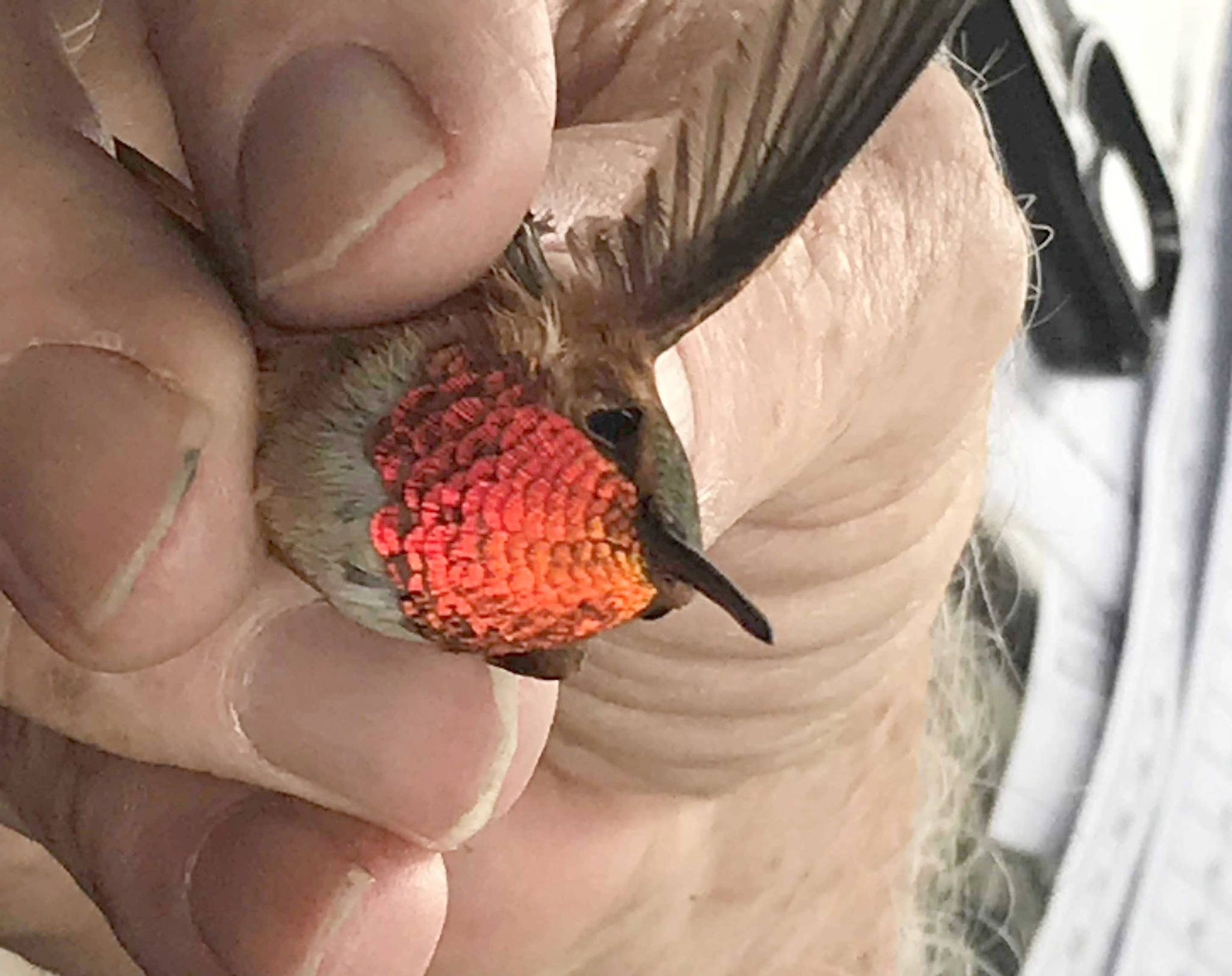By TODD ESKELIN
In my career as a bird bander, I have banded over 20,000 birds and probably closer to 30,000 birds. I have banded small ones like the 6-gram Ruby-crowned Kinglet, up to bald eagles measured in pounds.
Recently, I was humbled when I went to Boise, Idaho, to get my hummingbird banding certification. Initially, I felt like a gorilla with a bunch of bananas for fingers, trying to safely handle hummingbirds that weighed 2.5 to 4 grams, or the weight of a single penny.
It was no easy feat to get this qualification. Candidates must band with a certified trainer and handle enough birds to demonstrate competency in safe banding, measuring, aging and sexing hummingbirds.
Fred Basset, one of the best trainers in the country, bands in Idaho and I arranged to travel across southern Idaho on a three-day road banding trip with him. I banded nearly 200 hummingbirds and the experience was incredible.
I banded four different species, but the highlight was handling 50 Rufous Hummingbirds, a migratory species found back on the Kenai Peninsula.
Now the trick will be to capture and band Rufous Hummingbirds here with the hope of continuing to understand where our birds are wintering and what route they are taking to get there. Banding these birds will also give us insights about range expansion here, like what is seen in other areas of the country.
The last week in July in Alaska is epitomized by the craziness of returning salmon runs, flower beds at peak color and fireweed blooms reaching for the sky to catch the last blast of full sunshine. It is also a time on the Kenai where our smallest bird is fattening up and beginning a LONG journey south.
The Rufous Hummingbird is by far our smallest breeding bird and until recently all we knew was the direction was south and the timing was late July and early August.
In 2010, a Rufous Hummingbird banded in Tallahassee, Florida, was recaptured in Chenega Bay, Prince William Sound. Since then there have been additional band returns linking Prince William Sound to Texas, Colorado and California.
This is an incredible distance for a bird that only weighs 3.5 to 4 grams (slightly smaller than a nickel). For more perspective, these birds are only about one-third the weight of a chickadee.
In addition to Rufous, an increasingly common visitor to the Kenai Peninsula is the Anna’s Hummingbird. These hummingbirds also have been expanding their range and tend to show up in late fall after the Rufous have long departed.
They have even seemingly overwintered in Homer, surviving at least through February. I can’t wait to band some of the Anna’s and see if they are returning each fall or if a new crop is finding its way to Homer and Seward each fall.
There are a lot of myths about feeding hummingbirds, so I asked the experts while on my banding trip. They are very adamant that the presence of hummingbird feeders does not convince hummers to halt migration.
They have already made choices. While the feeders and warming lights may extend their survival beyond what would have been normal, they will not convince birds to overwinter.
Also, hummingbirds are surprisingly cold tolerant. We have this idea that with their high metabolic requirements and comfort in hot tropical climates, they just can’t survive when the temperature dips.
In Homer, Seward and Cordova, we have repeatedly watched Anna’s Hummingbirds survive down to single-digit temperatures. They utilize a special ability to enter a nightly torpor or temporary hibernation.
They lower their body temperature to just above a set point from which they could not recover. This reduces their metabolism up to 50 times slower than when they are active and feeding.
When the nighttime temperatures and darkness retreat, Anna’s Hummingbirds simply warm their body back up by shivering for about 20 minutes and resume normal daytime activity. Their average daily caloric requirements transferred to a human body weight would equate to a 155,000-calorie diet each day!
We can marvel about these statistics for days, but I am excited to track their occurrence on the Kenai Peninsula and add to their remarkable migration statistics.
If you see a hummingbird hanging around your flower garden and have a hummingbird feeder, go ahead and fill it up. No food coloring is needed, just one part sugar to four parts water. If you do get lucky enough to have a hummingbird stick around, get a photo and give me a call at 907-260-2817. Maybe we can put a little jewelry on these awesome birds and hope they reveal some of the still unclear mysteries of where they are heading each winter.
Todd Eskelin is a Wildlife Biologist at Kenai National Wildlife Refuge. Find more Refuge Notebook articles (1999-present) at https://www.fws.gov/Refuge/Kenai/community/Refuge_notebook.html or other info at http://www.facebook.com/kenainationalwildliferefuge.

